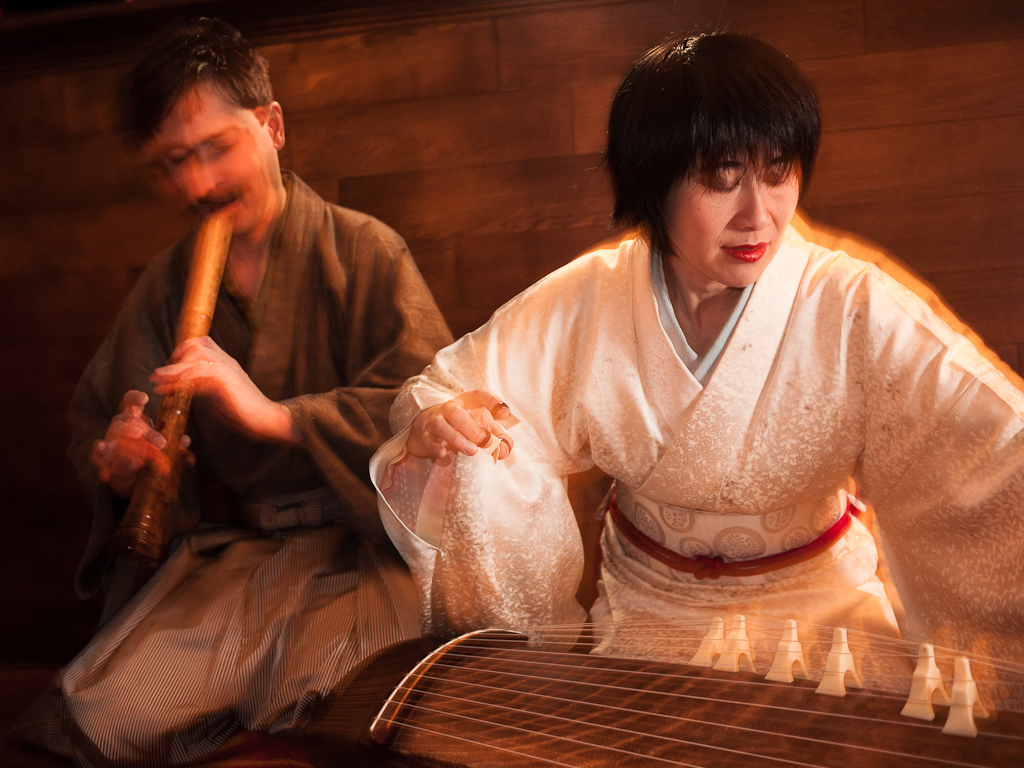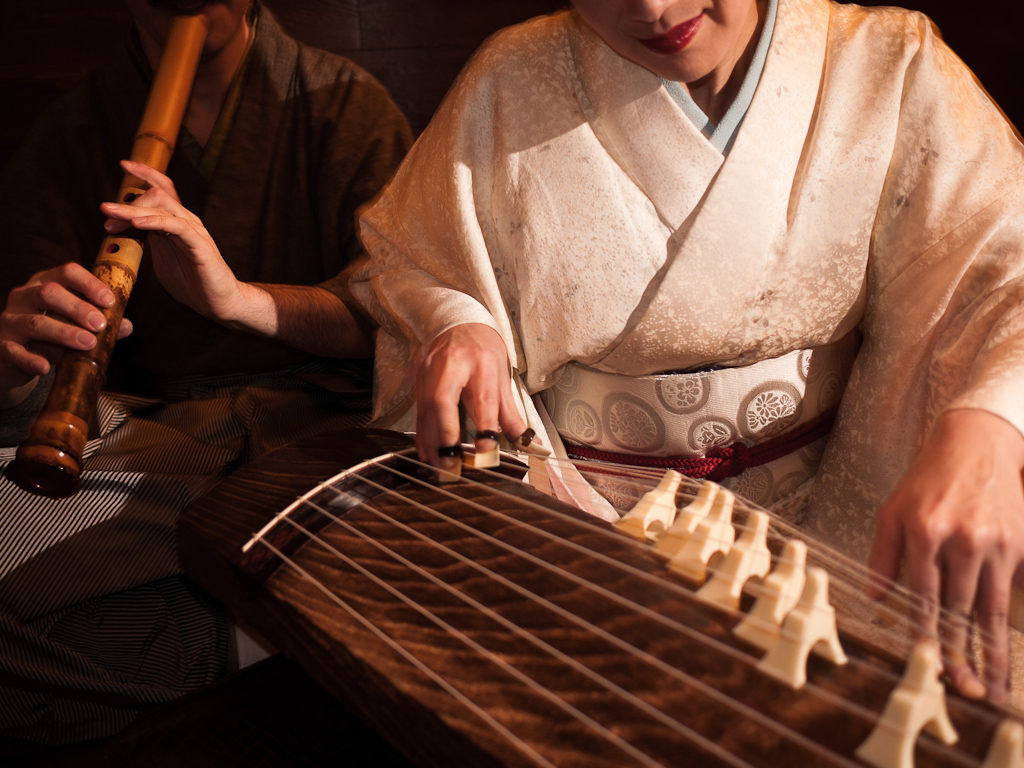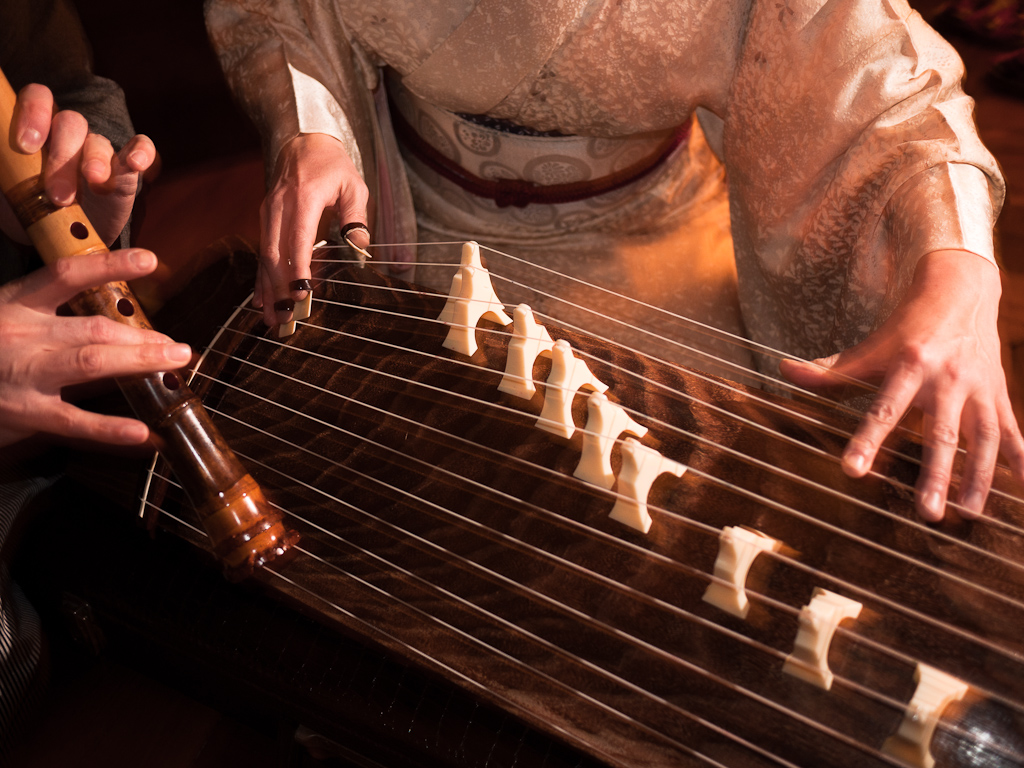

Kyoku
Mieko Miyazaki – koto, shamisen & vocal
Jean-François Lagrost – shakuhachi
Japanese traditional music varies greatly depending on its rural or urban origins. Music from the cities is that which is played in theatre productions and chamber music halls. As for shakuhachi music, the sacred music of the komuso outside of temple worship, it belongs to neither of these categories. The most popular and well-known music is that of the theatre, but at the same time, the Japanese government supports those concert halls featuring blind musicians. The latter perform a musical genre called “Sankyoku” which combines three instruments: koto, samisen and shakuhachi. This type of music is unique in that it is performed independently of other contexts (theatre, bordello, etc.), as opposed to other genres.
The ensemble of three Japanese musical instruments, the koto, the shamisen and the shakuhachi, is known in Japanese as ‘sankyoku’ or music of the three; which is the core of Japanese traditional chamber music. The term ‘Japanese traditional music’ consists of various genres, such as music which is related to religion and belief, theatrical plays, imperial court events, harvest festivals, agricultural activities as well as music for the pleasure of cosmopolitan aficiandos. In contrast, ‘sankyoku’ developed purely as music to be enjoyed at salons for practicing specialists unrelated to any specific social context.
The sankyoku musicians in the 17 th and 18 th centuries placed an importance on the instruments and focused on cultivating the skills of the performers and the methodology of the composers at a professional level. This style became fully established in the 19 th century with the arrival of new, accomplished performers who created new music through experiments with the genre.




